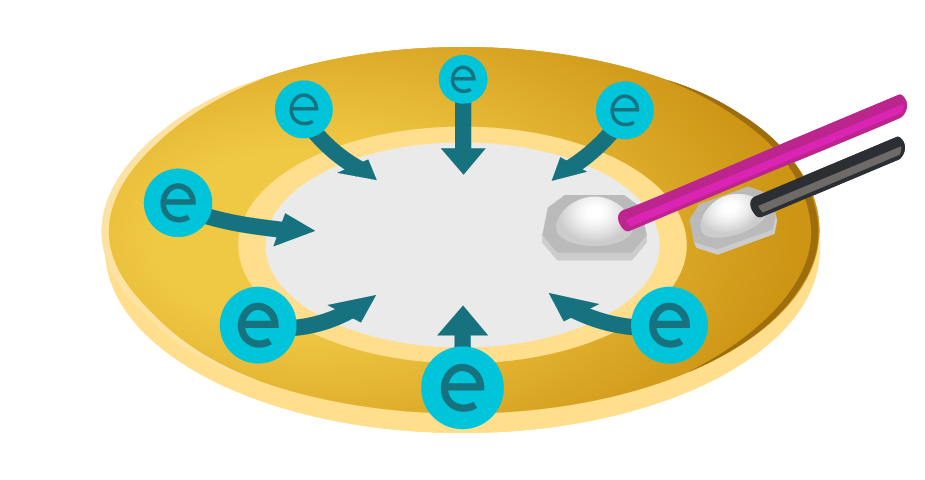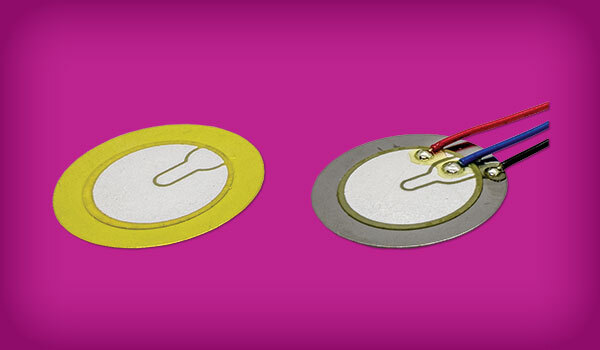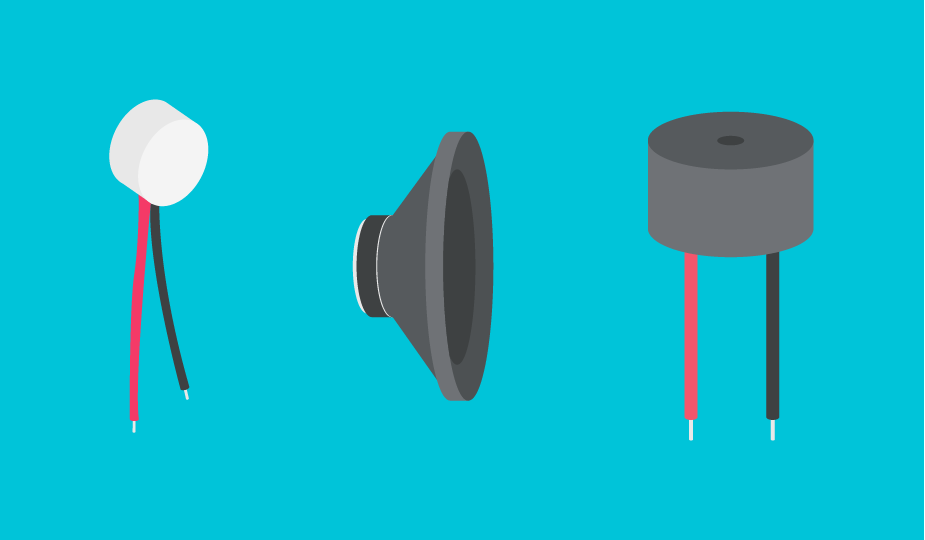圧電素子が電子機器の触覚フィードバックに理想的である理由

触覚フィードバックとは?
「触覚」という用語は、把握または知覚することを意味するギリシャ語に由来します。現代では、触覚とは特に触ることの感覚に関係しています。さまざまな電子アプリケーションでは、これはデバイスに組み込まれた力と触覚フィードバックに名前を付け、その製品やシステムとユーザーとのやり取りを強化するためにも使用されています。
触覚フィードバックは、いくつかの異なる機械的アクチュエータ技術が生成する振動、動き、力を使用して、圧力、重量、テクスチャなどの物体の物理的特徴を現実的にシミュレートすることができます。触覚フィードバックは、ユーザーと機械とのやり取りに第三のタッチ感覚(視覚と聴覚以外)を追加します。これは、強化されたデバイス入力とユーザーアクションの確認を通して、デジタルインターフェイスとの物理的な相互作用を改善するのに役立ちます。また、仮想世界のオブジェクトの操作をシミュレートすることもできます。
触感技術でユーザ体験を促進することで、ゲーム、自動車、医療系製品やシステムなどの、消費者、産業、商業、軍事の各市場でのその使用の迅速な受け入れと成長がもたらされました。
触覚アクチュエータとは?
様々な製品における物理的な感覚は、振動、動き、または圧力を生成する電気機械デバイスである触覚アクチュエータによってつくられます。触覚アクチュエータでは、動作を生み出すために次のような異なる技術が使用されています。
- 圧電作動は、電界が印加されたときに変形し振動する圧電素子を使用します。Same Skyのピエゾ素子製品をご覧ください。
- 振動モーター作動(または偏心回転質量)は、モーターシャフトに取り付けられた不均衡な重量を使用して、低周波振動を生成します。
- 電気活性ポリマー作動は、電界におけるポリマー材料の変形を利用して振動を生成します。
- 線形共振作動は、印加された電磁力によって特定の周波数で振動する磁石を使用して振動を生成します。
- ボイスコイル作動は、電流が印加されたときに磁場内のコイルの動きを使用して、様々な周波数および振動を生成します。
これらの技術はそれぞれ、振動周波数、消費電力、または精度のレベルにおいて異なる特性を設計者に提供し、望ましい触覚フィードバックのレベルに応じて、多くの製品アプリケーションに適応させることができます。
圧電効果とは?
圧電効果とは、機械的応力がかかると、特定の材料が電荷を生成する能力のことです。また、このプロセスは可逆的でもあります。すなわち、圧電材料に電界を印加することで、その材料に機械的な歪みや変形が生じて、結果として振動や動作が発生します。
触覚フィードバック設計でピエゾ素子はどのように使用されますか?
逆圧電効果は、触覚設計で使用する圧電素子に採用されます。この圧電効果により、必要に応じて製品やシステムのフォースセンサとして圧電素子を使用することもできます。
一部の圧電素子は、逆方向の偏光で結合される2つの層から構成されています。電圧が印加されると、一方の層が膨張し、他方の層が収縮してアクチュエータが曲がります。これは、ピエゾ素子の一般名、「ピエゾベンダー」につながります。この曲げの動作は、直線運動とは対照的に、精密で小さな変位を必要とするアプリケーションに有用です。
多層の圧電素子は、圧電材料の複数の層から構成されており、単一層素子と比較して低い電圧でより高い力及び変位をもたらします。これは、低電力でより大きな動きを必要とし、より大きなデバイスのためのスペースも備えるアプリケーションに価値があります。
圧電素子のこの偏向や曲げは、制御信号に直接比例しており、固定位置に保持し、振動するように作ることができます。この位置と振幅の独立した制御は、他のアクチュエータ技術よりも多くの情報を伝達することができる詳細な信号を実現します。

触覚フィードバック設計でのピエゾ素子の利点は何ですか?
触覚フィードバックのアプリケーションで使用される圧電素子は、圧電効果を利用し、高速かつパワフル、鋭い触覚のフィードバックを提供します。触覚アプリケーションで使用されるピエゾ素子の一般的な応答時間は1ミリ秒以下です。したがって、高精度で迅速なフィードバックを必要とするアプリケーションに最適です。また、アクチュエータ内で大きな質量を移動させる必要がないため、その他の技術よりも低い電力レベルで動作します。この低い電力での動作によって、遠隔操作や携帯性に最適なバッテリー駆動のシステムでも使用できます。
また、コンパクトで低プロファイルなこの圧電素子は、設計者が圧電素子を複数個設計に使用し、よりパワフルな触覚応答やより局所的なフィードバックをユーザに提供することを可能にします。
ピエゾ素子は、周波数、振幅、波形で幅広く構成可能です。さまざまなサイズ、形状、厚さ、電圧、力、静電容量定格、マウント技術があり、幅広いアプリケーションでお使いいただけます。また、特殊なニーズに合わせてカスタマイズすることもできます。
触覚フィードバックシステムのピエゾ素子設計上の考慮事項
圧電素子を使用して触覚フィードバックシステムを設計する際には、いくつかの要因を考慮する必要があります。これには、以下が含まれます。
- アクチュエータで必要な力に合わせて移動(振動)させる必要がある質量を決定する
- 単層または多層の圧電素子が必要かどうかを判断する
- 触覚システムの設計で使用可能なスペースのサイズや容量を理解する
- ピエゾ素子から必要な移動軸を決定する
- 製品で使用可能な電源と素子の容量負荷を検証し、適切なピエゾ・ドライバーを決定する
- 必要な周波数範囲またはターゲットを決定する
- 製品またはシステムの動作温度範囲を決定し、適切なピエゾ素子と一致させる
ピエゾ素子の汎用触覚フィードバックアプリケーション
ピエゾ素子は、以下を含む多くの既存製品や新興製品、市場に適した、正確で迅速な触覚フィードバックを生成します。
- コンピュータ、自動車、医療、テスト機器のタッチスクリーン
- 自動車とその他の輸送機器における車両システムのフィードバック
- スマートフォン
- 産業用制御
- ゲームコントローラー
- スマート家電
- ウェアラブルエレクトロニクス
- トレーニング、教育、または娯楽のための仮想現実システム
- 手術シミュレーションと遠隔医療処置
- 身体リハビリテーションフィードバックデバイス
概要
製品やシステムに使え、ユーザーに受け入れられる触覚フィードバックを設計、構築するには、振動強度、感度、精度、フォームファクタ、消費電力などのアクチュエータ要因を慎重に考慮する必要があります。圧電素子は、幅広い動作要件にわたって正確かつ効率的な動作を提供しするため、急速に成長するこの技術を実装するための理想的な方法です。Same Skyのピエゾ素子は、振動検出やタッチフィードバックの多くのニーズに合う幅広いサイズを取り揃えています。
主な取り組み
- 触覚フィードバックは、振動、圧力、テクスチャなどのタッチ感覚をシミュレートすることで、電子機器のユーザーインタラクションを向上させます。
- 触覚アクチュエータは、圧電、ボイスコイル、線形共振作動などの技術を使用して物理的感覚を作り出す電気機械部品です。
- 圧電素子は、逆圧電効果を使用して、正確で応答性の高い低電力触覚信号をリアルタイムで配信します。
- ピエゾ素子と多層ピエゾ素子は、さまざまな設計ニーズに対して異なるモーションプロファイル、力出力、電圧要件を提供します。
- 設計上の柔軟性は圧電素子の重要なメリットです。形状、サイズ、力定格、周波数応答、マウントスタイルなどの選択肢があります。
- 低い電力消費と高い応答性により、ピエゾ素子はバッテリー駆動やポータブル触覚フィードバックアプリケーションに最適です。
- 設計者は、ピエゾ素子を使用する際、最適な性能を得るために、質量変位、移動軸、利用可能な電力、周波数範囲、温度条件を考慮する必要があります。
- 一般的な触覚フィードバックアプリケーションには、スマートフォン、自動車制御、医療機器、産業システム、ゲーム、仮想現実プラットフォームなどがあります。



